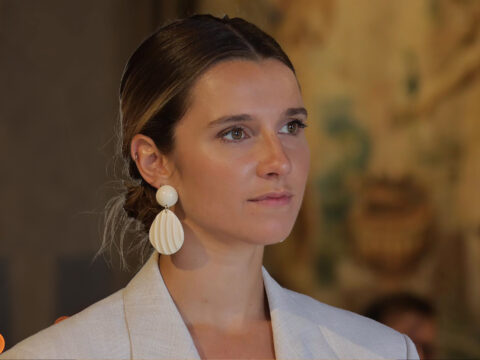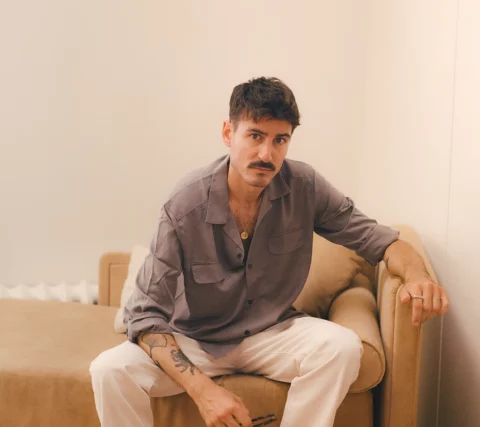OMOSA Meets: Mimosa Gravier, Head of eCommerce at Lafaurie

Intro
Lafaurie, a men’s fashion brand founded in 1991, had long been slow to embrace digital. When Mimosa Gravier joined, first as a freelancer, then in-house, eCommerce made up only a small part of the revenue, the digital team was minimal, and investment was limited. Two years later, the digital channel had grown by over 50% and was bringing in 50% new customers every month.
This growth happened without exploding media budgets: same investment, but a smarter strategy, a revamped calendar, a more efficient tech stack, and a sharp focus on driving peaks during off-peak months. In this in-depth interview, Mimosa, Head of eCommerce at Lafaurie, shares her vision, tools, automation workstreams, and the trade-offs that shaped her approach.
A must-read for eCommerce leaders, CMOs, and DNVB founders who want to build a profitable, scalable growth roadmap.
Step 1: Audit and structuring the foundation
No fixed playbook. When Mimosa joins a brand, she starts with a full audit, no preconceived ideas:
“I dive into all the data, acquisition, CRM, email, SMS, eCom. I look at the real pain points: traffic, conversion, email performance, customer structure.”
At Lafaurie, brand strategy had been underinvested.
“The priority was reigniting brand desire. The customer base was older, and the positioning was vague. We had to relaunch with a brand and digital strategy that worked hand in hand.”
She also restructured the organization. Internally: she hired and trained two apprentices and an intern, focusing on making the team autonomous. Externally: she streamlined vendors, replaced the dev agency with a Shopify-focused freelancer, and brought customer service back in-house with the help of an AI assistant.
Step 2: Driving growth without spending more
Objective: grow digital sales by 50% again, with the same media budget. The approach: invest smarter.
“We’re spending the same on media, but with more precision—tighter marketing campaigns, better-timed archive sales, smarter stock management.”
She targeted slow months (like February and July) with well-executed operations: seasonal archive sales with steep discounts (up to -70%) and enhanced product visuals using AI.
“We went from one sale per year to two or three.”
On the lead gen side, she introduced private sales before official markdowns—exclusive to newsletter subscribers. A hidden landing page, teaser pop-ups two weeks in advance, and acquisition ads focused on signups.
“Those were our best eCom days.”

Step 3: Automation, AI, and custom reporting
The team relies heavily on Dust, an AI assistant trained on all internal data—campaigns, commercial calendar, tone of voice, product history.
“It writes our reports, our copy, our analyses, and strategic recommendations.”
Every week, Dust analyzes Google Sheets synced with Shopify and produces reports: growth trends, budget gaps, year-over-year comparisons, content suggestions, and links with planned campaigns.
“It’s a business-grade AI assistant, not just a ChatGPT.”
The stack is streamlined: Shopify, Klaviyo, Triple Whale for attribution, Airtable for product and ops data, synced via RPower.
“All our content, email performance, customer reviews, and stock are in Airtable.”
Step 4: Acquisition structure and channel mix
Lafaurie allocates 70% of its media budget to acquisition. Meta and Google are the two main channels.
“We’ve ramped up on Google, where ROAS has improved. Meta remains key, especially in the US.”
She splits spend 50/50. On Meta: visuals are adapted to each market (more aggressive in the US). On Google: lots of PMax campaigns, but with careful placement monitoring. Attribution and tracking are handled via Triple Whale.
“We track CAC, new customer CAC, and CAC for retail.”
The US is a major growth lever.
“We used to work with a distributor. After their bankruptcy, we took control—new Shopify store, more direct and Paris-inspired strategy.”
Step 5: Retention, segmentation, CRM
With 50% new customers each month, churn is high, partly due to the brand’s repositioning. Mimosa’s solutions:
-
Churn and “soon-to-churn” segments
-
Targeted email and Meta campaigns
-
A print campaign via mail (premium paper, 3 waves)
On the CRM side:
-
Two calendars (France and US)
-
Differentiated content for prospects vs. clients
-
Two weekly campaigns (Wednesday + Saturday)
-
One style guide content piece every two weeks
The flows are simple but efficient: welcome, abandoned cart, post-purchase (tailored by product), birthday.
“We also have a retail client segment via Shopify POS.”

Step 6: Site, landings, and conversion
The website redesign, combined with the brand repositioning, disrupted loyal customers. Repeat purchase rates dropped. Mimosa admits:
“This is the cost of moving upmarket.”
No CRO strategy was in place yet. A few tests were conducted using Replo for the US landing pages. The “complete the look” module on product pages outperforms traditional recommendations.
No bundles in France (premium positioning), but tested in the US with $800 acquisition carts and simple product bundles (shirts, tees).
Final words
In just two years, Mimosa Gravier helped transform Lafaurie into a structured, scalable, and profitable digital brand. She modernized the tools, built a capable team, restructured acquisition strategy, and brought in a performance culture driven by data and AI.
Her core message:
“Start with a deep data analysis. And if you want to grow, go after the weak months—not the peaks.”